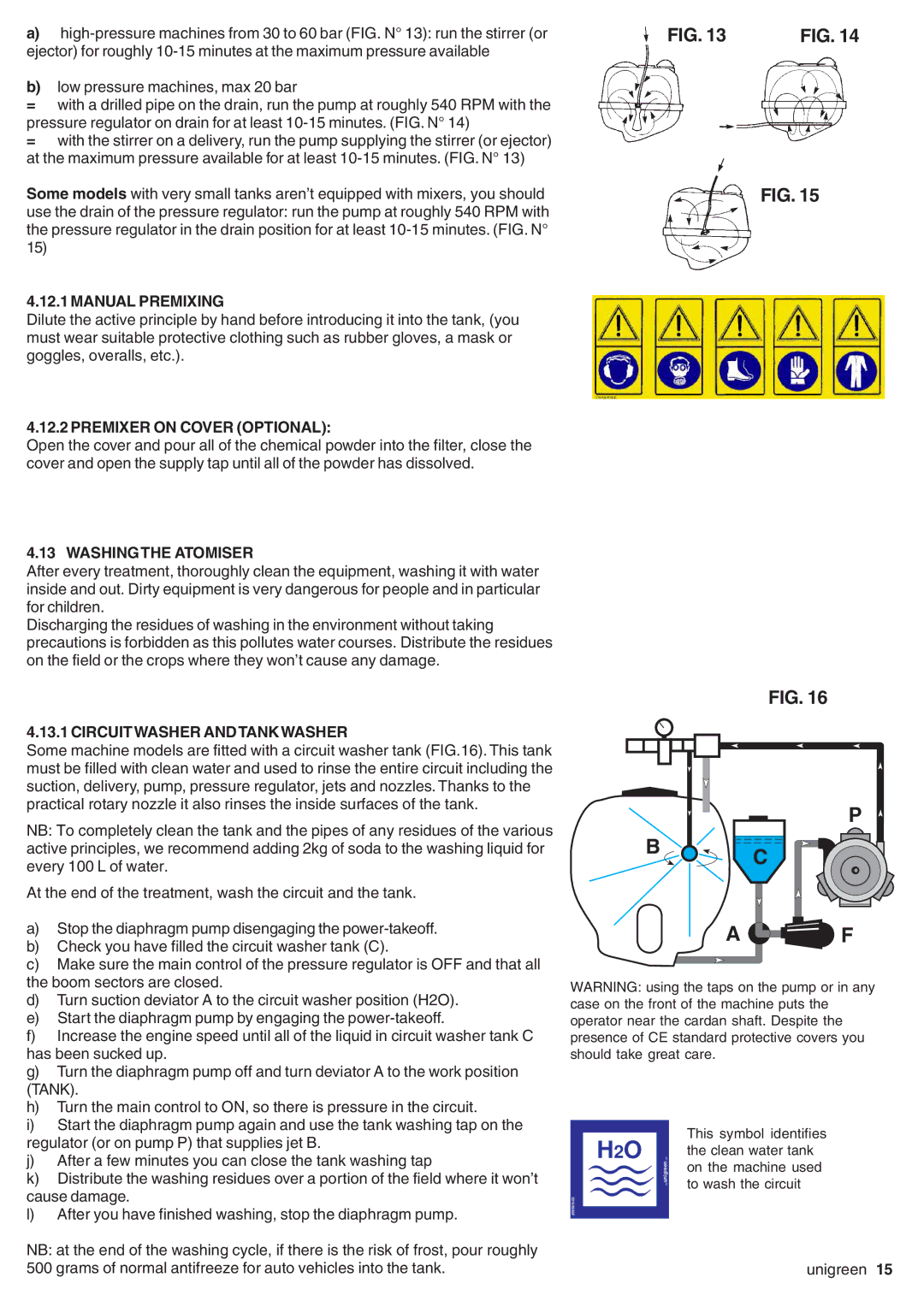AP APC, DEVIL, serie EOLO, EXPO, SIRIO specifications
Unigreen is recognized for its innovative agricultural machinery, particularly in the realm of spraying technology. Among its flagship products are the SIRIO, EXPO, DEVIL, AP APC, and the EOLO series, each designed to cater to the diverse needs of modern-day farming.The SIRIO line is particularly lauded for its versatility and efficiency. This series is engineered for precision application, equipped with advanced GPS technology that allows for automatic section control. The ability to adjust spray patterns and flow rates in real-time ensures minimal waste and optimal coverage, which translates to both economic and environmental benefits. Its durable construction also promises longevity, making it a reliable choice for farmers looking for investment-worthy equipment.
The EXPO series is tailored for open-field spraying. It boasts an impressive working width and can cover large areas quickly. The EXPO's multifunctional design includes a user-friendly interface, allowing operators to monitor and adjust performance easily. This model emphasizes user comfort and safety, featuring advanced anti-drip systems to minimize environmental impact during operation.
Next, the DEVIL is particularly noteworthy for its compact design and agility. Ideal for vineyards and orchards, the DEVIL allows for precise application in constrained spaces, facilitating detailed and targeted treatments. Its lightweight build ensures easy maneuverability without sacrificing power, and the robust motor guarantees consistent performance.
The AP APC series stands out for its multi-purpose functionality. This range is designed to perform well under diverse environmental conditions, making it suitable for various crops. The addition of a high-capacity tank allows for extended working hours without frequent refills, enhancing productivity. Furthermore, its low-center-of-gravity design improves stability on uneven terrains.
Lastly, the EOLO series showcases Unigreen's commitment to eco-friendliness. These machines feature low-drift nozzles that keep the chemicals where they are needed most, which helps in minimizing off-target application. The EOLO series also incorporates energy-efficient technologies, reducing fuel consumption and greenhouse gas emissions.
In summary, Unigreen's SIRIO, EXPO, DEVIL, AP APC, and EOLO series represent a blend of innovation, efficiency, and environmental responsibility. Each model is designed to meet the specific requirements of various agricultural environments, ensuring that farmers can operate at peak efficiency while contributing to sustainable farming practices.

